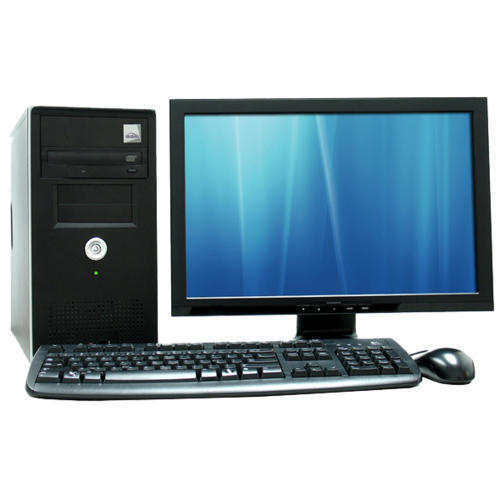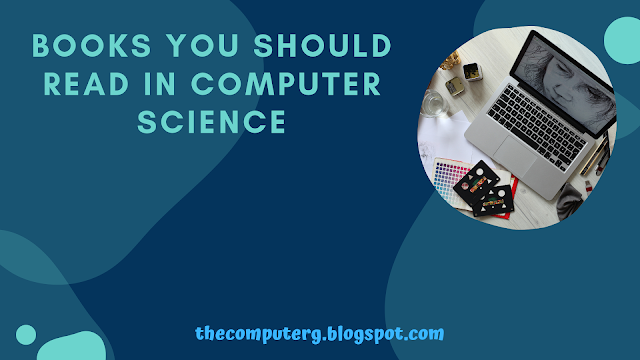Generation in the computer era provides a framework for the growth of
the computer industry and generally characterizes the major developments in the
computer industry. The modern computer era can be divided into Five generations
distinguished by the basic electronic component within the computer. Each new
logic unit let the computers faster in speed, smaller in size, more reliable
and less expensive than their predecessors. Modern computers came in a variety
of shapes, sizes and costs.
Computers were developed in Five different phases known as the
Generation of Computers.
Let’s discuss one by one in a little detail :
First
Generation (1942-1955)
The computers of this generation used Electronic Valves (an array of
Vacuum Tubes) as the basic component for memory and circuitry for the central
processing unit. These vacuum tubes were a fragile glass device like an
electric bulb, that could control and amplify electronic signals. They produced
a lot of heat and were prone to frequent fusing/ damaging of the installations.
Therefore, they were used very expensive and could be afforded only by very
large organizations.
Advantages
:
i) these computers were the
fastest calculating device of their time. They could perform computations in
milliseconds.
ii) vacuum tube technology made
possible the advent of electronic digital computers.
Disadvantages
:
i) Too bulky in size
ii) Air conditioning required
to control the temperature
iii) Prone to frequent hardware
failure.
iv) Commercial production was
difficult and costly.
v) Slow input and output
operations.
USEFUL
POINTS :
• Period: 1942-1955
• The component used: Vacuum
tubes
• Speed: milliseconds
• Maximum memory capacity: 2000
inch
• Mean time before failure:
minutes
• Peripherals :
o I/O : Punched cards, Paper
tape, Magnetic tape, Printer (online)
o Secondary Storage: Punched
Cards, Paper Tape, Magnetic Drum, Magnetic Disk etc
• Operating System : Mainly
Batch Processing
• Languages : Machine Code and
Electric Wired board
• Application Areas : Payroll
Processing, Record Keeping etc.
• Example : ENIAC, EDVAC, EDSAC
and IBM 650 ( the first modern digital computer produced on mass scale)
Second
Generation (1955-1964)
The second generation computer
used Semi-conductor transistor instead of vacuum tubes after the invention of
transistor by a team led by William Shockley.
This generation computers used transistors which were cheaper, consumed
less power, more compact in size, more reliable and faster than the vacuum
tubes used in first generation computers.
Advantages
:
i) Smaller in size as compared
to first generation computers
ii) More reliable
iii) Less heat generated.
iv) Less prone to hardware
failure
v) Wider commercial use
Disadvantages
:
i) Air conditioning required
ii) Manual assembly of
individual components into a functioning unit was a cumbersome task.
USEFUL
POINTS :
• Period: 1955-1964
• The component used:
Transistors
• Speed: microseconds
• Maximum memory capacity:
128000 inch
• Mean time before failure:
days
• Peripherals :
o I/O : Paper tape, Magnetic
tape, Visual Display Unit
o Secondary Storage : Paper
Tape, Magnetic Drum, Magnetic Disk etc
• Operating System:
Multiprogramming, Time-Sharing and Real-Time processing
• Languages: Assembly Language,
High-Level Languages like FORTRON, COBOL etc
• Application Areas: Batch
–oriented application like Billing, Payroll processing, Updating Inventory etc.
• Example : IBM 1401, IBM 7090,
IBM 1620, IBM 7094, IBM 700 series, CDC 1604, CDC 3600, UNIVAC 1108
Third
Generation (1964-1975)
The third generation computers
used Integrated Circuits (or IC Chips) in which many transistors, resistors,
capacitors and other
components (circuit elements) are fabricated or integrated and packaged
together into a very small surface of silicon known as Chips.
This new microelectronic technology was called Integrated Circuits. The
IC was invented by Jack Kilby in 1958
Advantages
:
i) Smaller in size as compared
to the previous generation
ii) More reliable than second
generation computers
iii) Low maintenance cost
iv) Easily portable
v) Commercial production was
easier and cheaper.
Disadvantages
:
i) Air conditioning required in
any case
ii) Highly sophisticated
technology required for the manufacture of IC chips.
USEFUL
POINTS :
• Period : 1964-1975
• Component used : Integrated
Circuits (IC)
• Speed : nanoseconds
• Maximum memory capacity : 4
million inch
• Mean-time before failure :
weeks to months
• Peripherals :
o I/O : Typewriter terminal,
Visual Display Unit, Optical Character Reader etc
o Secondary Storage : Magnetic
Disk, Extended Core Storage, Mass Storage devices
• Operating System :
Multiprogramming, Time-Sharing, Real Time processing and Remote processing
• Languages : High Level
Languages like FORTRON-II to IV , COBOL , BASIC, ALGOL-68,
• Application Areas : Airline
System, Market forecasting, Credit Card billing etc
• Example : IBM 360/370 series,
ICL 1900 series, PDP 11, RCA Spectra 70 etc.
Fourth
Generation (1975 onwards)
Initially, the Integrated
Circuits contained only about 10 to 20 components called Small Scale
Integration (SSI). Later on with the advancement in technology for
manufacturing Integrated Circuit Silicon Chips (ICS), it became possible to
integrate up to a hundred components on a single chip called Medium Scale
Integration (MSI).
Now the manufacture of integrated circuits became so advanced as to
incorporate hundreds of thousands of active components in a volume of a
fraction of inch, leading to Large Scale or Very Large Scale Integration
(VLSI).
Integrated Circuits which have the entire computer circuit on a single
silicon chip are called Microprocessors. The development of microprocessors
made it possible to place the complete CPU of a computer on a single chip.
The first Microprocessor Intel 4004 consisted of 2250 transistors on a
microprocessor was designed by Intel Corporation engineer Ted Hoff in 1971. It
was 4-bit microprocessor.
Advantages
:
i) Smaller in size because of
high component density
ii) Heat generated is
negligible
iii) Much faster in computation
then previous generations
iv) Less power consumption
v) No air conditioning is
required in most cases
Disadvantages
:
i) Highly sophisticated technology is required
for the manufacturing of VLSI chips
ii) Highly skilled people are
required in its manufacturing
USEFUL
POINTS :
• Period : 1975 onward
• Component used : Very Large
Scale Integrated Circuits (IC)
• Speed : picoseconds
• Maximum memory capacity : 200
million inch
• Mean-time before failure :
months
• Peripherals :
o I/O : Visual Display Unit,
Optical Character Reader, Magnetic Ink Character Reader,
o Secondary Storage : Floppy
disk , Hard Disk, CD-ROM, DVD etc
• Operating System :
Time-Sharing, Real Time processing and Network Distribution
• Languages : All High Level
Languages like C, C++, Java and other 4th generation languages (declarative
languages used in Database )
• Application Areas :
Mathematical Modelling, Simuation, Electronic Fund Transfer, Computer Aided
Manufacturing and Design etc
• Example : CRAY-1, CRAY-2, IBM
3090/600, IBM AS/400 HP 9000, IBM ES/9000, VAX etc
Fifth
Generation (Future Generation: 1991 onwards ) :
the fifth generation computers
are under development stage. These computers will use Ultra Large Scale
Integration (ULSI) chips instead of VLSI. These will be employing two or more
processors which compute in parallel.
The fifth generation machine are proposed to be based on Parallel
Processing hardware and Artificial Intelligence software with genuine I.Q.
(Intelligence Quotient). That provide the ability to reason logically and with
real knowledge of the world like human do.
Characteristics
of future generation computers :
i) Decreasing cost of hardware
and software
ii) High speed processing
iii) Knowledge based processing
system
iv) Development of natural
language processing
v) Advancement in supercomputer
technology
vi) Artificial Intelligence ,
think and behave like human (humanoid).
THANK YOU!













0 Comments